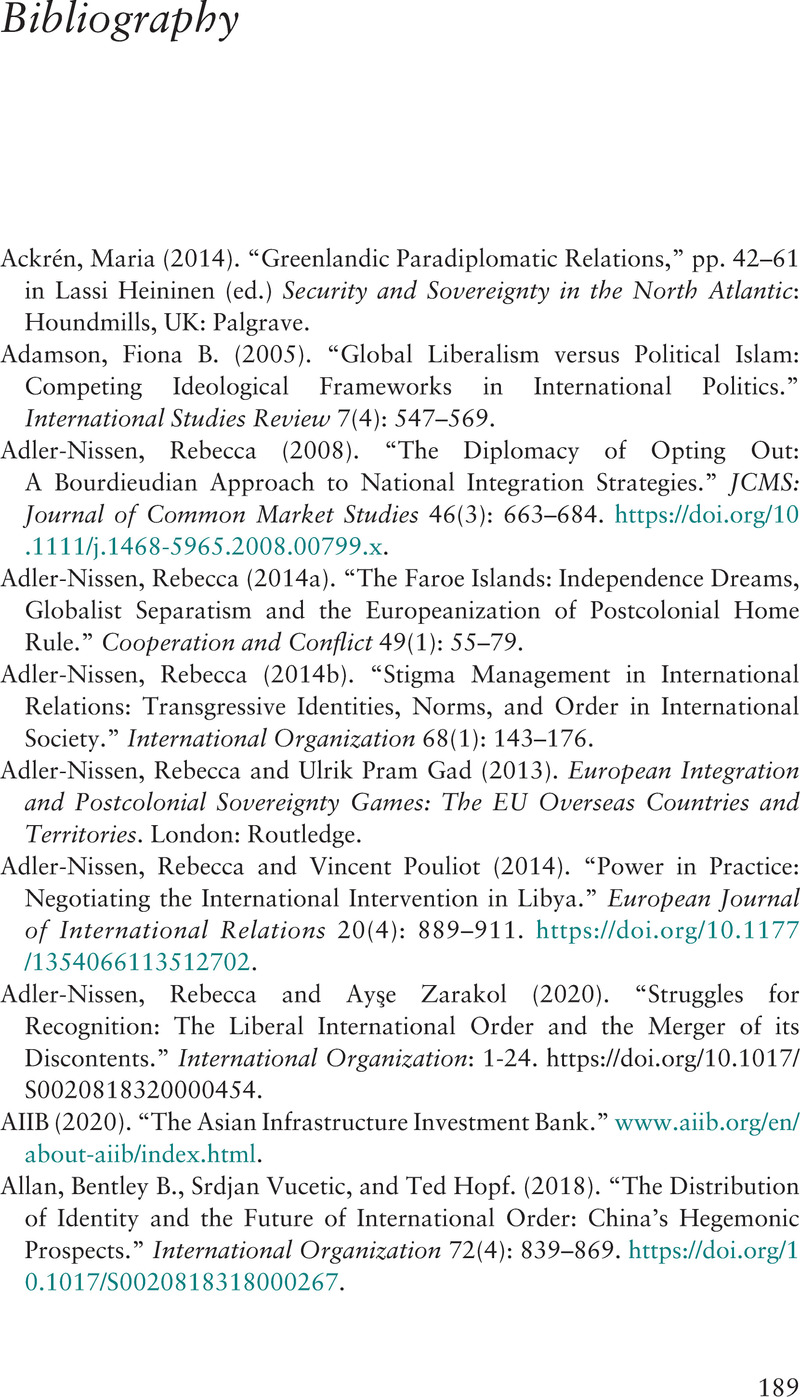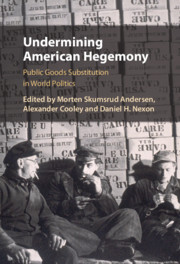Book contents
- Undermining American Hegemony
- Undermining American Hegemony
- Copyright page
- Contents
- Figures
- Contributors
- Preface
- Abbreviations
- 1 Goods Substitution and the Logics of International Order Transformation
- 2 Goods Substitution and Counter-Hegemonic Strategies
- 3 International Rankings As Normative Goods: Hegemony and the Quest for Social Status
- 4 China and the Asian Infrastructure Investment Bank: Undermining Hegemony through Goods Substitution?
- 5 The Silk Road to Goods Substitution: Central Asia and the Rise of New Post-Western International Orders
- 6 Goods Substitution in the USA’s Back Yard: Colombia’s Diversification Strategies under Conditions of Hierarchy
- 7 Goods Substitution at High Latitude: Undermining Hegemony from below in the North Atlantic
- 8 Reflections on the Volume
- Bibliography
- Index
- References
Bibliography
Published online by Cambridge University Press: 21 July 2021
- Undermining American Hegemony
- Undermining American Hegemony
- Copyright page
- Contents
- Figures
- Contributors
- Preface
- Abbreviations
- 1 Goods Substitution and the Logics of International Order Transformation
- 2 Goods Substitution and Counter-Hegemonic Strategies
- 3 International Rankings As Normative Goods: Hegemony and the Quest for Social Status
- 4 China and the Asian Infrastructure Investment Bank: Undermining Hegemony through Goods Substitution?
- 5 The Silk Road to Goods Substitution: Central Asia and the Rise of New Post-Western International Orders
- 6 Goods Substitution in the USA’s Back Yard: Colombia’s Diversification Strategies under Conditions of Hierarchy
- 7 Goods Substitution at High Latitude: Undermining Hegemony from below in the North Atlantic
- 8 Reflections on the Volume
- Bibliography
- Index
- References
Summary

- Type
- Chapter
- Information
- Undermining American HegemonyGoods Substitution in World Politics, pp. 189 - 217Publisher: Cambridge University PressPrint publication year: 2021

